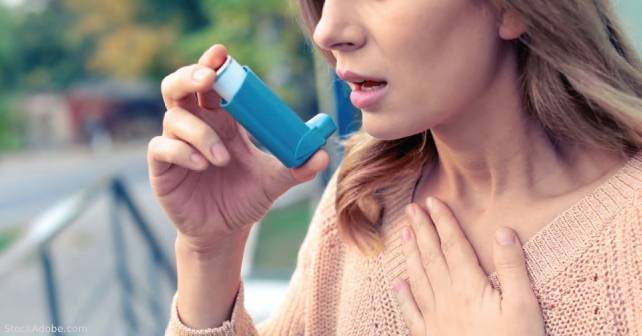
It is unclear whether ED PEF monitoring improves outcomes. While some guidelines include improving PEF measurements and greater than 60-80 percent of personal best (or predicted) in their algorithm for safe discharge from the ED, ACEP reviewed the literature on the topic and concluded that ED PEF monitoring for adults with asthma exacerbation does not improve outcomes, predict need for hospitalization, or decrease mortality.9,10 One study suggested that PEF done at discharge was not predictive of relapse in patients discharged from the ED with asthma exacerbations.11 On the other hand, PEF measurements can be a useful screening tool for hypercapnia, making routine assessment of blood gases unnecessary in most patients. The decision to perform PEF monitoring should be individualized and considered a single data point within the clinical context to aid in disposition decision making. Blood gases are not routinely required. They should be considered in patients with a PEF less than 50 percent predicted or for those patients who do not respond to initial treatments and who are deteriorating.12
Explore This Issue
ACEP Now: Vol 43 – No 05 – May 2024After history-based risk stratification comes an assessment of severity of illness to further help guide management. Mild or moderate asthma exacerbation is characterized by the patient being able to talk in phrases, preferring sitting to lying, not appearing agitated, and having an elevated respiratory rate, no accessory muscle use, heart rate of 100-120 bpm, oxygen saturation of 90-95 percent, and PEF of greater than 50 percent predicted or best. Severe asthma exacerbation is characterized by the patient being able to talk in words only (not phrases), appearing agitated, and having a respiratory rate greater than 30/min, accessory muscle use, heart rate greater than 120 bpm, oxygen saturation less than 90 percent and PEF less than or equal to 50 percent predicted or best. Life-threatening asthma is characterized by drowsiness, confusion, or silent chest to auscultation.13
For mild to moderate asthma exacerbations, current treatment recommendations include short-acting beta agonists (SABA) at 4-10 puffs via MDI with spacer repeated every 20 minutes for one hour, prednisolone 40-50 mg orally, and oxygen supplementation to a target saturation of 93-95 percent. Reassessment should be considered in one hour or less with continued SABA treatment as needed. Corticosteroids should be given within one hour of presentation to patients with moderate to severe exacerbations.
For severe exacerbations treatment, recommendations include adding ipratropium bromide 4-8 puffs via MDI with spacer, repeated every 20 minutes for one hour, continued SABA treatments, and magnesium sulphate 2 g IV if there is little or no improvement with initial therapies.14,15 Non-invasive positive pressure ventilation, continuous SABA, repeated magnesium sulfate, epinephrine, helium–oxygen mixtures, and endotracheal intubation with ketamine should be considered in patients who deteriorate despite these treatments or who present with life-threatening asthma.16
Pages: 1 2 3 4 5 | Single Page





No Responses to “How To Manage Adult Asthma”